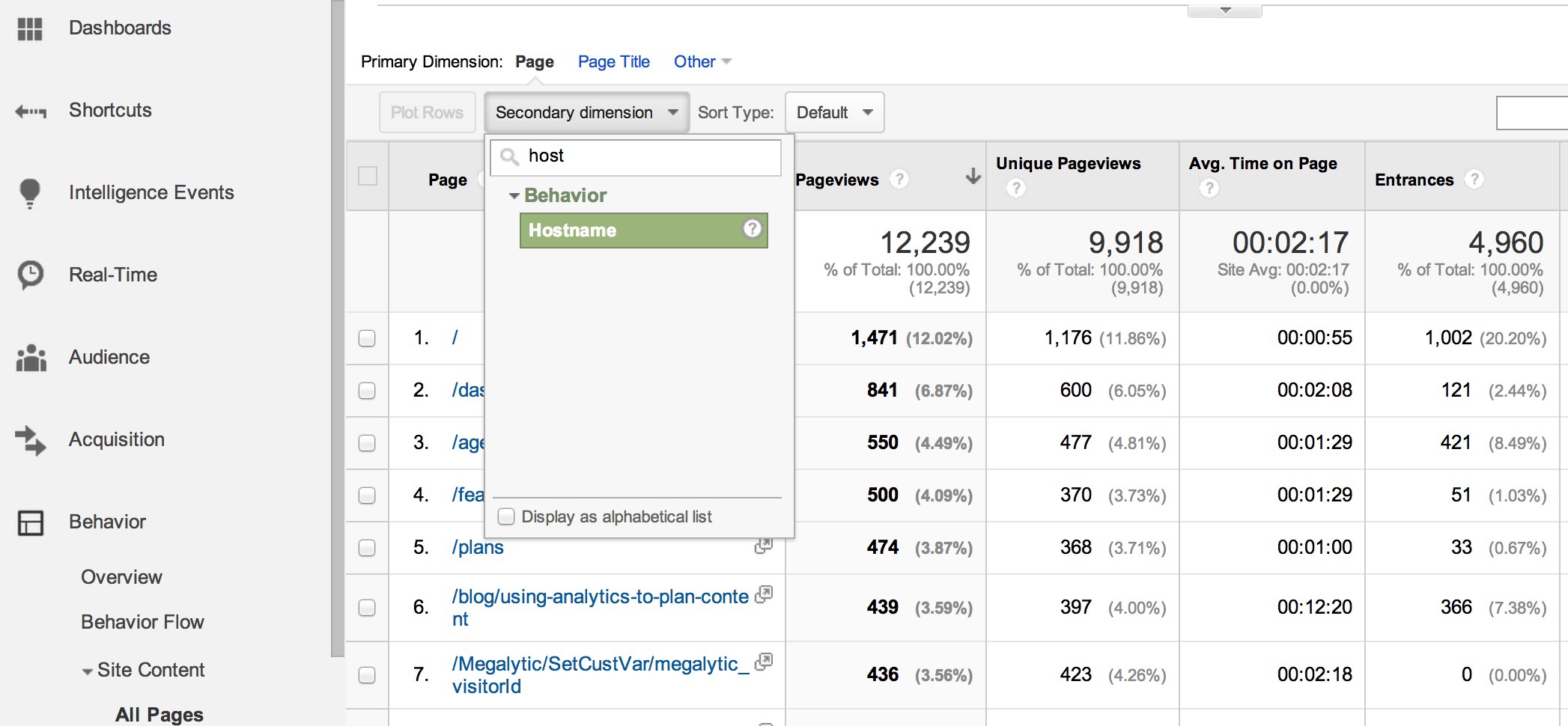Demystifying the 'Secondary Dimension' in Google Analytics: Secret Insights
Demystifying the 'Secondary Dimension' in Google Analytics: Secret Insights
Blog Article
Introducing the Intricacies of Second Dimension in Google Analytics: a Comprehensive Overview on Just How It Works
Browsing the intricate realm of second measurements in Google Analytics is a job that requires an eager understanding of just how this feature runs within the platform. As digital landscapes evolve and information becomes progressively essential for decision-making, grasping the subtleties of additional dimensions can be the trick to unlocking valuable insights.
Fundamentals of Second Measurement in Google Analytics
When assessing information in Google Analytics, using the secondary measurement feature gives important insights right into the efficiency of different metrics. The second measurement allows customers to additionally explore their information by adding an extra layer of info to their primary measurements. By doing so, analysts can obtain an extra comprehensive understanding of the aspects influencing their site's performance.
In Google Analytics, the key dimensions represent the main classifications of data, such as website traffic resources or devices. When an additional dimension is applied, it supplies a deeper level of granularity by showing another facet of the information within the chosen main dimension. For example, if the main dimension is 'Web traffic Source,' adding an additional measurement like 'Landing Page' can reveal which particular web pages are driving web traffic from each resource.
This function is specifically beneficial for determining patterns, correlations, and fads that may not be right away obvious when checking out the information from a single dimension. By leveraging the additional measurement in Google Analytics, users can reveal important understandings that can notify critical decisions and optimizations to boost web site performance.
Establishing Second Measurement Records
Increasing on the insights acquired via the application of additional measurements in Google Analytics, the procedure of setting up additional dimension records involves setting up added layers of information to further improve the deepness of evaluation. When the primary report is picked, customers can click on the "Second dimension" tab situated above the information visualization area. From there, a drop-down menu will appear, offering a wide variety of options to pick the additional dimension that best matches the main information set.
Leveraging Additional Dimensions for Insights
Utilizing second measurements in Google Analytics provides a strategic method to extracting nuanced understandings for educated decision-making in online company optimization. By combining primary dimensions with second dimensions, organizations can dig much deeper into their data to discover useful relationships and patterns that might not be right away noticeable. By segmenting site traffic by geographical location (key measurement) and then including a secondary dimension like gadget category, services can recognize if certain regions prefer accessing the site via mobile or desktop.
Additionally, leveraging additional measurements allows businesses to obtain a far better understanding of individual actions and preferences. As an example, assessing conversion rates based on web traffic resources (main dimension) in addition to the second measurement of touchdown web pages can disclose which particular pages are most reliable in driving conversions for organic search website traffic versus social media sites website traffic. These insights can after that notify advertising techniques and web site optimization initiatives to boost total efficiency and take full advantage of ROI.
Advanced Techniques for Second Measurements
To better remove intricate insights and improve data-driven decision-making within Google Analytics, implementing innovative methods for utilizing secondary measurements is necessary in unlocking much deeper layers of beneficial details for business optimization. One advanced technique is the use of custom-made measurements and metrics, enabling the tracking of certain customer communications or behaviors that are not recorded by default in Google Analytics. By applying and defining personalized dimensions, organizations can tailor their tracking to align with one-of-a-kind service goals and objectives.
An additional sophisticated method includes making use of filters in conjunction with second measurements. Filters enable users to fine-tune the information displayed in Google Analytics records, supplying more targeted and relevant understandings. By applying filters purposefully with additional dimensions, services can section information better, causing a clearer understanding of individual behavior and performance metrics.

Optimizing Information Evaluation With Secondary Measurements

Additionally, enhancing information evaluation with second dimensions includes try out various combinations to recognize patterns and relationships that might not be quickly apparent. This repetitive approach permits experts to tweak their coverage and concentrate on one of the most appropriate information points for their service purposes. Ultimately, by leveraging second measurements effectively, experts can boost the precision and effectiveness of their information analysis initiatives in Google Analytics.
Final Thought
In final thought, recognizing the complexities of additional dimensions in Google Analytics is crucial for getting deeper insights right into website performance. By establishing up second dimension reports, leveraging them for insights, and using innovative techniques, experts can maximize information analysis and make informed decisions. This look at here now comprehensive overview visit here has actually given a comprehensive summary of how secondary measurements work and their value in improving the logical capacities of Google Analytics individuals.
The additional dimension enables individuals to even more dissect their data by adding an additional layer of details to their key measurements. When a secondary dimension is used, it offers a much deeper level of granularity by revealing another element of the data within the picked main measurement.Expanding on the insights obtained through the application of secondary dimensions in Google Analytics, the procedure of establishing up additional dimension reports entails setting up additional layers of data to better improve the deepness of evaluation. By combining primary measurements with additional measurements, organizations can delve much deeper into their data to reveal useful relationships and patterns that may not be right away apparent. One way to maximize data analysis with additional dimensions is to incorporate them with primary measurements to get an extra thorough view of internet site efficiency.
Report this page